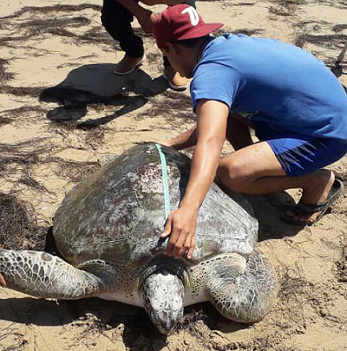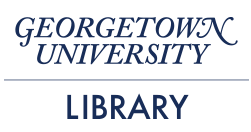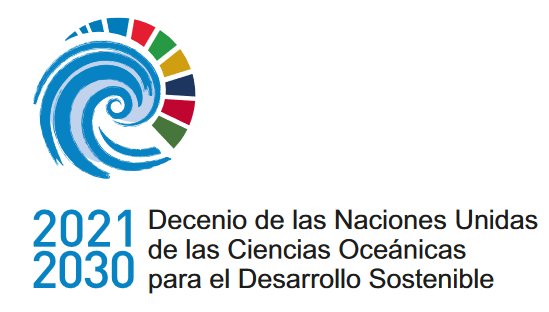Estimaciones actualizadas de capturas de tortugas marinas en la Península de la Guajira, Venezuela
DOI:
https://doi.org/10.47193/mafis.3842025011001Palabras clave:
Pesca artesanal, tortuga verde, Golfo de Venezuela, Ilegal No Reglamentado y No Declarado (INDNR), carne de animales silvestres acuáticosResumen
La Península de la Guajira es una de las áreas de alimentación más importantes para las tortugas marinas en Venezuela. Allí convergen cinco especies de tortugas marinas: la tortuga verde, carey, caguama, cardón y golfina. En esta zona habita el pueblo indígena Wayuú. Ellos tienen una estrecha relación con las tortugas marinas y, durante generaciones, han utilizado estos animales como recursos de subsistencia. En la Península de la Guajira, la captura de tortugas marinas siempre ha ocurrido y ha sido históricamente alta; hoy en día, continúa, pero su magnitud es desconocida. Nuestro objetivo fue evaluar y actualizar la estimación de la captura de tortugas marinas en la Península de la Guajira. Realizamos 25 salidas de campo entre febrero y marzo de 2022, visitando 15 localidades para buscar tortugas vivas o restos en los sitios de desembarque. Registramos la fecha, ubicación de cada hallazgo y tomamos mediciones biométricas del largo de la curva del caparazón (LCC). Además, se realizaron 15 entrevistas semiestructuradas con miembros de la comunidad Wayuú. Durante los estudios de campo, se identificaron aproximadamente 81 tortugas marinas. Las especies más afectadas fueron las tortugas verdes (91,3%, n = 74), seguidamente con carey (3,7%, n = 3), las caguamas (3,7%, n = 3) y cardón (1,2%, n = 1). La mayoría de las tortugas verdes fueron subadultas, con un LCC promedio de 64,7, 7 ± 16,5 cm (82,2%, n = 52). Se necesitan más actividades de monitoreo en la Península de la Guajira para comprender el nivel de captura y sus implicaciones para las poblaciones de tortugas marinas en la Cuenca del Caribe.
Descargas
Referencias
Álvarez-Varas, R, Barrios-Garrido, H, Skamiotis-Gómez, I, Petitpas, R. 2020. Cultural role of sea turtles on Rapa Nui (Easter Island): spatial and temporal contrast in the Pacific island region. Isl Stud J. 15 (1): 253-270. DOI: https://doi.org/10.24043/isj.111
Awadh H, Darasi, Aksissou M, Tiwari M. 2017. Marine turtle bycatch in artisanal fisheries in Yemeni Red Sea waters. African Sea Turtle Newsletter. 7: 1-5.
Barrios-Garrido H. 2018a. Socio-economic drivers affecting marine turtle conservation status: causes and consequences [PhD thesis]. Townsville: James Cook University. DOI: https://doi.org/10.25903/5be0fecec8548
Barrios-Garrido H. 2018b. Las tortugas marinas y los pueblos Wayuú: una historia de ritos, creencias y usos tradicionales. Ecotrópicos. 30: e0002.
Barrios-Garrido H, Becker P, Bjorndal KA, Bolten AB, Diez CE, Espinoza-Rodríguez N, Fastigi M, Gray J, Harrison E, Hart KA, et al. 2020b. Sources and movements of marine turtles in the Gulf of Venezuela: regional and local assessments. Reg Stud Mar Sci. 36: 101318. DOI: https://doi.org/10.1016/j.rsma.2020.101318
Barrios-Garrido H, Espinoza-Rodríguez N, Rojas-Cañizales D, Palmar J, Wildermann N, Montiel-Villalobos MG, Hamann M. 2017. Trade of marine turtles along the southwestern coast of the Gulf of Venezuela. Mar Biodivers Rec. 10: 15. DOI: https://doi.org/10.1186/s41200-017-0115-0
Barrios-Garrido H, Montiel-Villalobos MG. 2016. Strandings of leatherback turtles (Dermochelys coriacea) along the western and southern coast of the Gulf of Venezuela. Herpetol Conserv Biol. 11 (1): 244-252.
Barrios-Garrido H, Montiel-Villalobos M, Palmar J, Rodriguez-Clark K. 2020a. Wayuú capture of green turtles, Chelonia mydas, in the Gulf of Venezuela: a major Caribbean artisanal turtle fishery. Ocean Coast Manage. 188: 105123. DOI: https://doi.org/10.1016/j.ocecoaman.2020.105123
Barrios-Garrido H, Palmar J, Wildermann N, Rojas-Cañizales D, Diedrich A, Hamann M. 2018. Marine turtle presence in the traditional pharmacopoeia, cosmovision, and beliefs of Wayuú indigenous people. Chelonian Conserv Biol. 17 (2): 177-186. DOI: https://doi.org/10.2744/CCB-1276.1
Barrios-Garrido H, Petit-Rodríguez M, Espinoza-Rodríguez N, Wildermann N. 2019. Marine debris and marine turtles in the Venezuelan Guajira Peninsula: a new menace. Marine Turtle Newsletter. 156: 41.
Barrios-Garrido H, Wildermann N, Guada H, Buitrago J, Balladares C. 2015. Guaraguá Lepidochelys olivacea Eschscholtz, 1829. In: Rodríguez JP, García-Rawlins A, Rojas-Suárez F, editors. Libro rojo de la fauna venezolana. 4th ed. Caracas: Provita y Fundación Empresas Polar. p. 153-154.
Berry P, Ogawa-Onishi Y, McVey A. 2013. The vulnerability of threatened species: adaptive capability and adaptation opportunity. Biology. 2 (3): 872-893. DOI: https://doi.org/10.3390/biology2030872
Bolten AB. 1999. Techniques for measuring sea turtles. In: Eckert KL, Bjorndal KA, Abreu-Grobois FA, Donnelly M, editors. Research and management techniques for the conservation of sea turtles. Washington: IUCN/SSC Marine Turtle Specialist Group. p. 110-114.
Buitrago J, Guada HJ, Rondón-Médicci M, Balladares C, Llanos V. 2015b. Carey Eretmochelys imbricata Linnaeus, 1766. In: Rodríguez JP, García-Rawlins A, Rojas-Suárez F, editors. Libro rojo de la fauna venezolana. 4th ed. Caracas: Provita y Fundación Empresas Polar. p. 151-152.
Buitrago J, Vera V, García-Cruz MA, Montiel-Villalobos MG, Rodríguez-Clark KM, Barrios-Garrido H, Peñaloza CL, Guada HJ, Sole G. 2015a. Tortuga verde Chelonia mydas Linnaeus, 1758. In: Rodríguez JP, García-Rawlins A, Rojas-Suárez F, editors. Libro rojo de la fauna venezolana. 4th ed. Caracas: Provita y Fundación Empresas Polar. p. 149-150.
Bovery C, Wyneken J. 2013. Sea turtles in Florida’s Atlantic waters. Mar Fish Rev. 75 (3): 1-12.
Campbell LM. 2010. Studying sea turtle conservation and learning about the world: insights from social science. Conserv Soc. 8: 1-4.
[CIT] Convención interamericana de para la protección y conservación de las tortugas marinas. 2006. Amenazas a las tortugas marinas y posibles soluciones. San José: CIT. 11 p.
Da Silva VRF, Mitraud SF, Ferraz MLCP, Lima EHSM, Melo MTD, Santos AJB, da Silva ACCD, de Castilhos JC, Batista JAF, Lopez GG, et al. 2016. Adaptive threat management framework: integrating people and turtles. Environ Dev Sustain. 18: 1541-1558. DOI: https://doi.org/10.1007/s10668-015-9716-0
Espinoza-Rodríguez N, Pernía Y, Severeyn H, García de Severeyn Y, Barrios-Garrido H. 2021. Echinoderms from the Gulf of Venezuela, north-western coast of Venezuela. Pap Avul Zool. 61: e20216151.
[FAO] Food and Agriculture Organization of the United Nations. 2020. The state of world fisheries and aquaculture 2020. Sustainability in action. Rome: FAO. [accessed 2023 Dec 22]. https://www.fao.org/3/ca9229en/online/ca9229en.html.
Frey D. 2022. Global sea turtle poaching is on the decline. [accessed 2023 Dec 22]. https://wildlife.org/global-sea-turtle-poaching-is-on-the-decline/.
Godfrey M, Cluse W. 2006. Handbook for sea turtle volunteers in North Carolina. Raleigh: Coastal Fauna Diversity Program. North Carolina Wildlife Resources Commission. 44 p.
Guada H, Rondón-Médicci M, Barrios-Garrido H, Montiel-Villalobos MG, Buitrago J Balladares. 2015. Tortuga cabezona Caretta caretta Linnaeus, 1758. In: Rodríguez JP, García-Rawlins A, Rojas-Suárez F, editors. Libro rojo de la fauna venezolana. 4th ed. Caracas: Provita y Fundación Empresas Polar. p. 148.
Guada H, Sole G. 2000. Plan para la recuperación de las tortugas marinas de Venezuela. WIDECAST Informe Técnico del PAC. 39. 112 p.
Herring M. 2021. The palm trees loomed, stretching over the dunes like sleepy giants shading patches of sand from the scorching sun. [accessed 2023 Dec 22]. Oceanographic. https://oceanographicmagazine.com/features/covid-19-turtle-conservation/.
Kennett R, Robinson CJ, Kiessling I, Yunupingu D, Munungurritj Mr, Yunipingu D. 2004. Indigenous initiatives for co-management of Miyapunu/Sea turtle. Ecol Manage Restor. 5 (3): 159-166. DOI: https://doi.org/10.1111/j.1442-8903.2004.00204.x
Marsh SME, Hoffmann M, Burgess ND, Brooks TM, Challender DW, Cremona PJ, Hilton-Taylor C, Lafayete de Micheaux F, Lichtenstein G, et al. 2022. Prevalence of sustainable and unsustainable use of wild species inferred from the IUCN Red List of Threatened Species. Conserv Biol. 36 (2): e13844. DOI: https://doi.org/10.1111/cobi.13844
McKee H. 2023. Saving sea turtles during the Pandemic. [accessed 2023 May 25]. Ecology Project International. https://www.ecologyproject.org/post/saving-sea-turtles-during-the-pandemic.
Medina E, Barboza F. 2003. Manglares del sistema del Lago de Maracaibo: caracterización fisiográfica y ecológica. Ecotropicos. 16 (2): 75-82.
Mejías-Balsalobre C, Restrepo J, Borges G, García R, Rojas-Cañizales D, Barrios-Garrido H, Valverde RA. 2021. Local community perceptions of sea turtle egg use in Tortuguero, Costa Rica. Ocean Coast Manage. 201: 15423. DOI: https://doi.org/10.1016/j.ocecoaman.2020.105423
Meletis ZA, Harrison EC. 2010. Tourists and Turtles: searching for a balance in Tortuguero, Costa Rica. Conserv Soc. 8: 26-43.
Mendoza-Lewis J. 2021. Sustainable use and conservation of the green turtle by the Miskitu indigenous people, Nicaragua. [accessed 2023 Jul 15]. Local Biodiversity Outlooks. https://localbiodiversityoutlooks.net/sustainable-use-and-conservation-of-the-green-turtle-by-the-miskitu-indigenous-people-nicaragua/.
Muche M, Yemata G, Molla E, Muthama Muasya A, Tsegay BA. 2022. COVID-19 lockdown and natural resources: a global assessment on the challenges, opportunities, and the way forward. Bull Natl Res Cent. 46: 20. DOI: https://doi.org/10.1186/s42269-022-00706-2
Musick JA. 2002. Sea turtles. In: Carpenter KE, editor. The living marine resources of the western central Atlantic. Vol 3. Bony fishes part 2 (Opistognathidae to Molidae), sea turtles and marine mammals. FAO species identification guide for fishery purposes. Rome: FAO. p. 2018-2028. https://scholarworks.wm.edu/vimsbooks/190.
New England Aquarium. 2021. Macuro. Conservación de tortugas marinas en el Golfo de Paria, Venezuela. [accessed 2023 Jun 22]. New England Aquarium. https://www.neaq.org/macuro-conservacion-de-tortugas-marinas-en-el-golfo-de-paria-venezuela/.
Newing H. 2010. Conducting research in conservation: social science methods and practice. London: Routledge. 400 p. DOI: https://doi.org/10.4324/9780203846452
Oravetz CA. 2000. Reducción de la captura incidental en pesquerías. In: Eckert KL, Bjorndal KA, Abreu-Grobois FA, Donnelly M, editors. Técnicas de investigación y manejo para la conservación de las tortugas marinas. 4. Washington: IUCN/SSC Marine Turtle Specialist Group Publication. p. 217-222.
Pakiding F, Zohar K, Allo AYT, Keroman S, Lontoh D, Dutton PH, Tiwari M. 2020. Community engagement: an integral component of a multifaceted conservation approach for the transboundary western Pacific leatherback. Front Mar Sci. 7: 549570. DOI: https://doi.org/10.3389/fmars.2020.549570
Pritchard PCH, Mortimer JA. 1999. Taxonomy, external morphology, and species identification. In: Eckert K, Bjorndal K, Abreu-Grobois F, Donnelly M, editors. Research and management techniques for the conservation of sea turtles. 4. Washington: IUCN/SSC Marine Turtle Specialist Group Publication. p. 31-48.
Quesada-Rodríguez C, Orientale C, Diaz-Orozco J, Sellés-Ríos B. 2021. Impact of 2020 COVID-19 lockdown on environmental education and leatherback sea turtle (Dermochelys coriacea) nesting monitoring in Pacuare Reserve, Costa Rica. Biol Conserv. 255: 10898. DOI: https://doi.org/10.1016/j.biocon.2021.108981
Restrepo J, Webster EG, Ramos I, Valverde RA. 2023. Recent decline of green turtle Chelonia mydas nesting trend at Tortuguero, Costa Rica. Endanger Species Res. 51: 59-72.
Robinson DP, Hyland K, Beukes G, Vettan A, Mabadikate A, Jabado RW, Rohner CA, Pierce SJ, Baverstock W. 2021. Satellite tracking of rehabilitated sea turtles suggests a high rate of short-term survival following release. PLoS ONE. 16 (2): e0246241. DOI: https://doi.org/10.1371/journal.pone.0246241
Rojas-Cañizales D, Espinoza-Rodriguez N, Petit-Rodríguez M, Palmar J, Mejías-Balsalobre C, Wildermann N, Barros T, Barrios-Garrido H. 2020. Marine turtle mortality in a southern Caribbean artisanal fishery: a threat for immature green turtles. Reg Stud Mar Sci. 38: 101380. DOI: https://doi.org/10.1016/j.rsma.2020.101380
Rojas-Cañizales D, Espinoza-Rodríguez N, Rodríguez M, Palmar J, Montiel-Villalobos M, et al. 2021. Leatherback turtles (Dermochelys coriacea) in the Gulf of Venezuela updated stranding assessment 2001-2014. Mar Fish Sci. 34 (1): 113-119. DOI: https://doi.org/10.47193/mafis.3412021010305
Rojas-Cañizales D, Restrepo J, Mejías-Balsalobre C, Barrios-Garrido H, Valverde RA. 2022. Illegal take of nesting sea turtles in Tortuguero, Costa Rica: conservation, trade, or tradition? J Environ Manage. 324: 116408. DOI: https://doi.org/10.1016/j.jenvman.2022.116408
Rondón-Médicci M, Hedelvy J, Guada H, Buitrago J, Balladares C. 2015. Cardón Dermochelys coriacea Vandelli, 1761. In: Rodríguez JP, García-Rawlins A, Rojas-Suárez F, editors. Libro rojo de la fauna venezolana. 4th ed. Caracas: Provita y Fundación Empresas Polar. 155-156.
Rousseau Y, Watson A, Blanchard J, Fulton E. 2019. Defining global artisanal fisheries. Mar Policy. 108: 103634.
Rueda-Almonacid J, Mayorga J, Ulloa G. 1992. Observaciones sobre la captura comercial de tortugas marinas en la península de la Guajira, Colombia. In: Rodríguez-Mahecha M, Sánchez-Páez H, editors. Contribución al conocimiento de las tortugas marinas de Colombia. 4. Santafé de Bogotá: Instituto Nacional de los Recursos Naturales Renovables y del Ambiente (INDERMA). p. 133-153.
Sarmiento R. 2020. Covid-19 lockdown proves a boon for sea turtles in Sarangani Bay. [accessed 2023 May 22]. Earth Journalism Network. https://earthjournalism.net/stories/covid-19-lockdown-proves-a-boon-for-sea-turtles-in-sarangani-bay.
Senko JF, Burgher KM, Mancha-Cisneros M, Brendan J, Godley BJ, Kinan-Kelly I, Fox T, Humber F, Koch V, Smith AT, et al. 2022. Global patterns of illegal marine turtle exploitation. Global Change Biol. 28 (22): 6509-6523. DOI: https://doi.org/10.1111/gcb.16378
Stringell TB, Calosso MC, Claydon JAB, Clerveaux W, Godley BJ, Lockhart KJ, Phillips Q, Ranger S, Richardson PB, Sanghera A, et al. 2013. Marine turtle harvest in a mixed small-scale fishery: evidence for revised management measures. Ocean Coast Manage. 82: 34-42. DOI: https://doi.org/10.1016/j.ocecoaman.2013.05.004
Tambiah C. 1999. Interviews and market surveys. In: Eckert KL, Bjorndal KA, Abreu-Grobois FA, Donnelly M, editors. Research and management techniques for the conservation of sea turtles. Washington: IUCN/SSC Marine Turtle Specialist Group. p. 156-163.
Troëng S, Rankin E. 2005. Long-term conservation efforts contribute to positive green turtle Chelonia mydas nesting trend at Tortuguero, Costa Rica. Biol Cons. 121 (1): 111-116. DOI: http://doi.org/10.1016/j.biocon.2004.04.014
[USAID] United States Agency for International Development. 2014. Sea turtle conservation and improvement of coastal communities livelihoods program. [accessed 2023 Dec 22]. Antiguo Cuscatlán: Fundación Zoológica de El Salvador (FUNZEL). https://www.funzel.org.
Uzair-Rusli M, Samsol S, Pelf-Nyok C. 2020. Sea turtle egg online shopping during Covid-19 movement control order (mco) in Malaysia. Indian Ocean Turtle Newsletter. 32: 2-5.
[Venezuela] República Bolivariana de Venezuela. 2005. Ley Orgánica de Pueblos y Comunidades Indígenas. Ministerio del Poder Popular para los Pueblos Indígenas. Caracas: Asamblea Nacional.
Witherington B, Michae, B, Herren R. 2006. Chelonia mydas-green turtle. Biology and conservation of Florida turtles. Chelonian Res Monogr. 3: 90-104.
Zahirul-Islam M. 2020. Impact of COVID-19 on sea turtle nesting, conservation and management in Bangladesh. Indian Ocean Turtle Newsletter. 32: 5-6.
Zeigler J. 1964. The hydrography and sediments of the Gulf of Venezuela. Limnol Oceanogr. 9: 397-411.

Descargas
Publicado
Número
Sección
Licencia
Derechos de autor 2025 Royner Carrasquero-Labarca, Matthew Ware, Jordano Palmar, Daniela Rojas-Cañizales, Héctor Barrios-Garrido

Esta obra está bajo una licencia internacional Creative Commons Atribución-NoComercial-CompartirIgual 4.0.
Los autores de los artículos publicados en Marine and Fishery Sciences conservan los derechos de autor de sus artículos, a excepción de las imágenes de terceros y otros materiales añadidos por Marine and Fishery Sciences, que están sujetos a los derechos de autor de sus respectivos propietarios. Por lo tanto, los autores son libres de difundir y volver a publicar sus artículos, sujeto a los requisitos de los propietarios de derechos de autor de terceros y sujeto a que la publicación original sea completamente citada. Los visitantes también pueden descargar y reenviar artículos sujetos a los requisitos de citas. La capacidad de copiar, descargar, reenviar o distribuir cualquier material siempre está sujeta a los avisos de derechos de autor que se muestran. Los avisos de copyright deben mostrarse de manera prominente y no pueden borrarse, eliminarse u ocultarse, total o parcialmente. El autoalmacenamiento en servidores y repositorios de preimpresión está permitido para todas las versiones.
Esta revista ofrece a los autores una política de acceso abierto. Los usuarios pueden leer, descargar, copiar, distribuir, imprimir, buscar o vincular los textos completos de los artículos, o usarlos para cualquier otro propósito legal dentro de la licencia Creative Commons 4.0 (BY-NC-SA), sin solicitar permiso previo del editor o del autor. Esto está de acuerdo con la definición BOAI de acceso abierto.






















